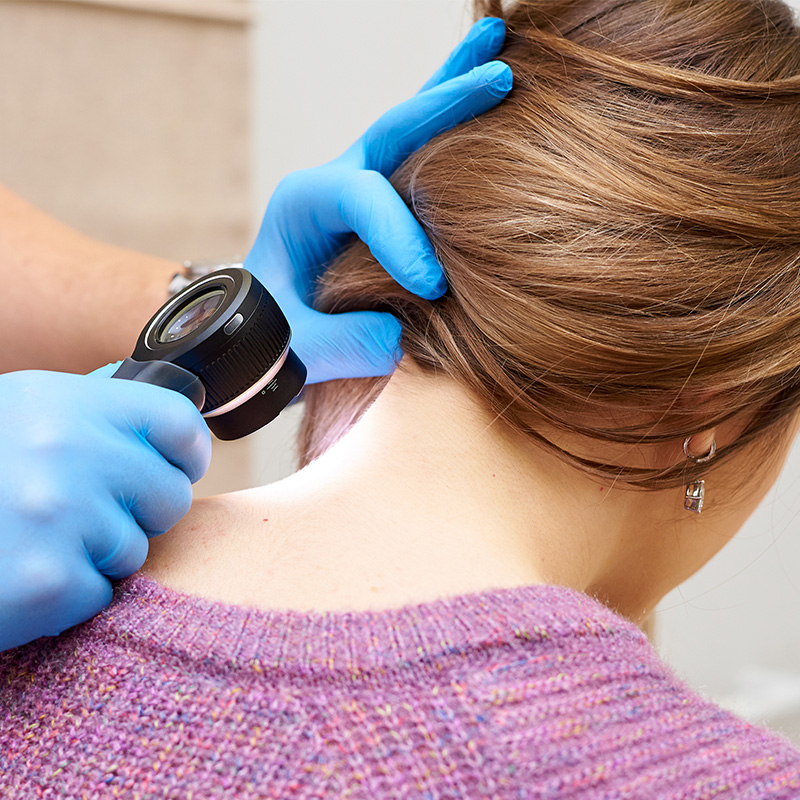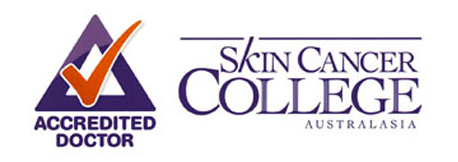
Skin check
Our experienced skin cancer doctor will take 15 minutes for a full skin check depending on your skin type. To thoroughly screen, the doctor will need to examine all area that has been exposed to the sun and will ask to undress apart from your underwear. Ladies are asked not to wear makeup.
Diagnosis and treatment
Skin cancer is the most common form of cancer in Australia, with 80 per cent of all cancers diagnosed in Australia being skin cancer. Queensland has the highest rate of skin cancer in the world. The early diagnosis and treatment of skin cancer can dramatically improve the outcome. We recommend that you receive yearly skin checks for early detection and to make an appointment if you have any concerns with existing skin lesions.
Skin cancer is diagnosed by skin examination and biopsy. The treatment choice will depend on your age and general health, the type and size of cancer where it is in your body and what you want.
Our doctors offer the most common way to treat skin cancer such as surgery, cryotherapy, use of topical chemotherapy, curettage, and cautery as appropriate.
Types of Skin Cancer

Basal Cell Carcinoma
The Basel Cell Carcinoma is the most common but least dangerous form of skin cancer, accounting for about 70 per cent of all skin cancers in Australia. A BCC appears as a lump or scaly area. It may be red, pale, or pearly in color and as it grows, it may become ulcerated like a sore that won’t heal. A BCC grows slowly and is most found on the head, neck, and upper torso. It is important to remember if there is one BCC, there is likely to be another occurring now or in later years.

Squamous Cell Carcinoma
Squamous cell carcinoma is a common form of skin cancer. It can develop on parts of the body that get a lot of sun, such as the head, neck, face, hands, and arms. Squamous cell carcinoma is not as dangerous as melanoma, but it can spread to other parts of the body if not treated. Every year, some people in Australia die from aggressive SCCs.

Melanoma
Melanoma is the least common but most dangerous form of skin cancer accounting for approximately 5 per cent of all skin cancers. A melanoma appears as a new spot, or an existing spot, freckle or mole that changes color, size or shape. Usually, a melanoma has an irregular or smudgy outline and is more than one color. A melanoma grows over a period of weeks to months and can be anywhere on the body, not only in areas frequently exposed to the sun. If left untreated, the cancer cells can spread to other parts of the body. Most deaths from skin cancer are the result of melanomas.

Solar Keratoses
Solar Keratoses or Sunspots are not a form of skin cancer but, like skin cancers, they are the result of sun exposure. Sunspots are scaling spots, which are red or occasionally brown in color. They appear on areas of the skin that are most frequently exposed to the sun such as the face, ears, neck, forearms, and hands. Occasionally, sunspots may develop into a skin cancer, however the probability is low. Sunspots are a warning sign. They occur on skin which has had enough sun exposure to develop skin cancer and skin cancers are more common in people with sunspots. If you have sunspots, you should watch out for signs of early skin cancers and take extra care when out in the sun.

Moles
Moles are harmless, colored spots that range from one millimeter to ten millimeters in diameter, are uniform in shape, even-colored and may be raised. Some have uneven borders and multiple colors like brown and black. The more moles or freckles you have the higher your risk of sun damage, so if there is any sign of change, see a health professional immediately.

Seborrhoeic Keratoses
Seborrhoeic Keratoses are spots with a clear edge; they look like they sit on top of the skin. They vary in color from pale brown to orange or black and vary in size from a few millimeters to two centimeters. Most people have a few of these spots by the age of 60.





